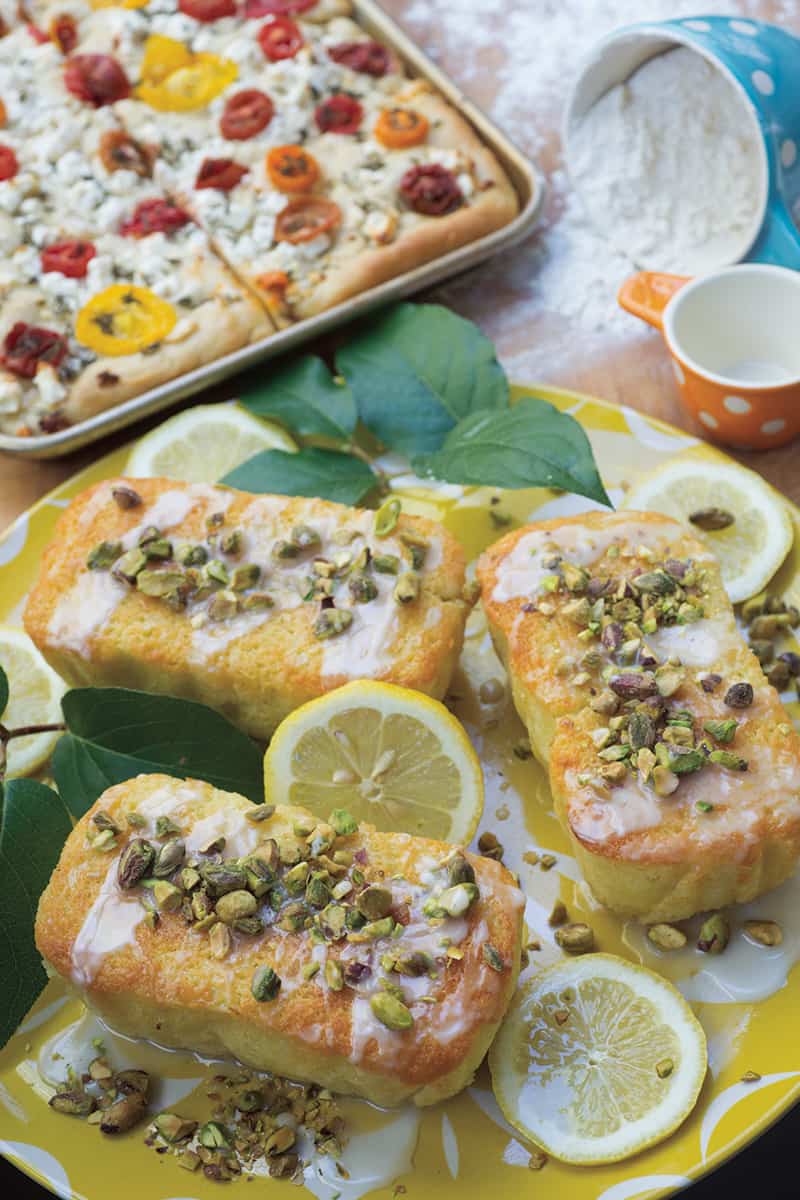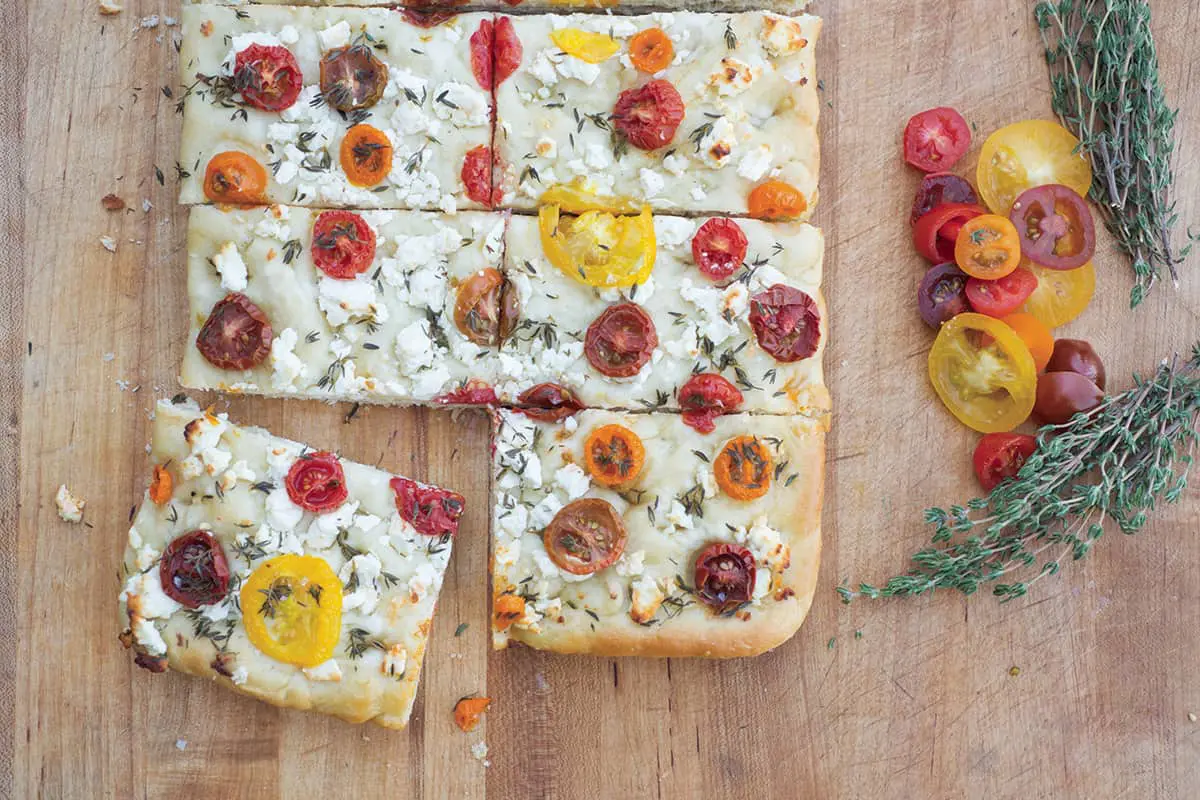By Annie Fenn // Photography by Paulette Phlipot
–
One of the best things about mountain living is breathing that delicious high-altitude air. Low in pressure and humidity, crisp and clean, the air up here makes for light powder in the winter and never a muggy summer day.
But as a baker, those same conditions do a number on your favorite recipes. Cakes crater in the middle, cookies spread like pancakes, brownies stick to the pan, and yeast breads rise too fast, ending up tough and dry.
I’ll never forget the first time I baked in my tiny Jackson rental, elevation 6,400 feet. It was a beloved family recipe for pumpkin bread—the one I had cranked out perfectly since the age of ten. I watched in horror as it rose up out of the pan, toppled over the sides and onto the oven floor, and then collapsed. We still ate it, but it was enough to discourage me from baking at altitude entirely.
Yet I didn’t want to give up just because I moved to the mountains. So, for the love of homemade pumpkin bread, I decided to outsmart the baking-at-altitude conundrum by taking a scientific approach. I measured carefully, followed recipes exactly, and made notes in a spiral binder dedicated to my baking projects. By adjusting my favorite recipes a little at a time—cutting back on baking soda here, adding flour there––my baked goods eventually emerged from my Teton-based oven just as good as they did at sea level.
While achieving perfection at altitude took me some time, armed with a few tips (and a basic grasp of science) you, too, can bake in the mountains like a pro.
Techniques
Position oven rack as indicated in the recipe and monitor oven temperature with an oven thermometer (critical at altitude!).
Increase oven temperature by 15 to 25 degrees Fahrenheit to help baked goods set before rising.
Baking times vary widely at altitude. Check for doneness several minutes before the expected time, and keep hovering.
Prevent overflow by filling pans less than three-quarters full.
Grease pans liberally and dust with flour to prevent sticking or line pans with parchment. Or, invest in silicone bakeware.
Measure flour accurately by first whisking it gently. Then use a spoon to fill the measuring cup, and level it off with a knife.
Don’t overcream butter and sugar or overbeat egg whites; excess air will make cakes rise too high.
Be very gentle with yeast dough. Go for a longer, cooler, slower rise and don’t let dough more than double in size. For bread with a tender crumb, 460° Bread baker Jerod Pfeffer advises, “Give it a little more time to ferment. Time builds flavor.”
Fall Harvest Focaccia
—
Makes two half-sheets (9 1/2 x 13-inch)
—
This rustic flatbread benefits from a slow fermentation at altitude, with three rises.
—
to proof the yeast:
2 1/8 teaspoons active dry yeast (not instant!)
1/4 cup warm water
—
for the dough:
2 1/4 cups water, plus 1 tablespoon (if needed)
3 tablespoons olive oil for the dough, plus more for finishing
7 1/2 cups, plus 6 tablespoons, all-purpose flour
1 tablespoon fine sea salt or table salt
Flaky sea salt for finishing
1. Place the yeast and 1/4 cup warm water in a large mixing bowl. Let stand until cloudy and slightly foamy (about 15 minutes).
2. Stir in (by hand) 2 1/4 cups water and 3 tablespoons olive oil.
3. Add 2 cups of flour and a tablespoon of salt. Stir until smooth.
4. Stir in remaining flour, 1 cup at a time, until the dough comes together. Add the additional tablespoon of water, if needed.
5. Knead dough on a floured surface until soft and elastic, about 8 to 10 minutes.
6. Place the dough in a lightly oiled bowl, cover with plastic wrap, and let rise until doubled in size (about 1 hour).
7. Cut the dough in half and stretch each half to fit a rectangular half-sheet pan coated with olive oil. Cover and let rise a second time (about 30 minutes).
8. Dimple the dough with your fingertips, leaving indentations that are as deep as a 1/2-inch. Cover and let rise a third time, until doubled (about 1 1/2 hours).
9. Preheat oven to 400º F and place the rack on the lowest level. Brush the dough with olive oil and toppings (see below).
10. Bake 20 to 25 minutes or until surface is golden brown and crusty. Cut into squares and eat warm or at room temperature.
Heirloom Tomato, Feta, and Thyme: Place tomato slices over the surface of the dough. Crush thyme leaves between your fingers and sprinkle generously. Top with 1 cup crumbled feta and finish with flaky sea salt.
Fig and Fennel Seed: Remove the stems from 8 to 9 dried figs and cut into rounds. Place over the surface of the dough and sprinkle with 2 teaspoons fennel seeds. Finish with flaky salt.
Lemony Almond
Yogurt Cake
—
Makes one standard loaf or 3 small loaves
—
1 cup all-purpose flour
1/2 cup almond flour or meal
1/2 teaspoon Kosher salt
1 3/4 teaspoons baking powder
1 cup plain whole-milk yogurt
1 scant cup sugar (1 cup minus 2 tablespoons)
3 large eggs
Zest of 2 lemons
1/2 teaspoon almond extract
1/2 teaspoon vanilla extract
1/2 cup olive oil
Butter and flour (for coating pan)
1 cup pistachios, toasted and chopped (optional)
—
glaze:
2 tablespoons fresh-squeezed lemon juice
3/4 cup confectioners sugar
1. Preheat oven to 350º F and place oven rack in the center position.
2. Coat the pans (either a standard loaf pan or smaller pans measuring 5 1/2 x 2 1/2 x 2 1/2-inch) with a generous amount of butter and dust with flour.
3. Place the all-purpose flour, almond flour, salt, and baking powder in a bowl. Whisk to combine.
4. In another bowl, whisk together the yogurt, sugar, eggs, lemon zest, almond and vanilla extracts, and olive oil.
5. Fold dry ingredients into the wet ones until combined. Scrape the batter into loaf pan(s) with a spatula and smooth over the top.
6. Bake for 50 minutes for the large loaf or 38 minutes for the smaller loaves, checking frequently. The cake is done when a skewer placed into its center comes out clean. If it’s wet, cook another 5 minutes and test again.
7. Place the cake on a rack to cool.
8. To make the glaze, place 2 tablespoons lemon juice in a bowl and whisk in 3/4 cup confectioners sugar until smooth. Add lemon juice or sugar, as needed, to make a pourable frosting.
9. Pour the glaze over the cooled cake, letting it drip down the sides. Top with chopped pistachios (if desired).
Recipe Tweaks
Cut back on the leavener. With low air pressure, cake-like baked goods have no place to go but up. Start by reducing an eighth of a teaspoon per teaspoon of baking powder, baking soda, or yeast. But always reduce baking powder and soda in equal proportions.
Decrease sugar by one to two tablespoons per cup. Sugar becomes concentrated as it liquefies in the oven.
Increase flour by one to two tablespoons per cup.
Add moisture to baked goods—a few extra teaspoons of water, honey, or olive oil will keep dough from drying out. I use extracts (lemon, orange, vanilla, or almond) for a flavor boost.
Look for recipes that include yogurt, crème frâiche, buttermilk, and sour cream to increase acid and enhance structure and crumb.
Use a larger egg than the recipe calls for to add structure and to counteract liquid evaporation.
Use active dry yeast—not instant or fast-acting dry yeast!
Change recipes little by little. Start with the leavener, then the flour, the sugar, and the liquid. Go slow.



